While we all love quality store-bought pasta – making your own is affordable, delicious and can sit in your pantry for months without spoiling. Flour, eggs and a pinch of salt is all you need to create a batch. You can use a pasta machine (see instructions, below), but with little effort and big reward you can create fabulous fresh pasta at home using just a rolling pin and a good dose of Italian music to accompany you – it makes it taste better, too.
How to use a pasta machine
To roll out pasta with a pasta machine, following the included instructions, set machine to widest setting then lightly flour machine and dough.
Feed 1 dough portion through machine. Repeat 2 more times, folding dough in thirds and turning 90° between rolls until smooth and the same width as the machine (at least 12cm).
Halve dough widthways. Feed each dough half through machine separately, without folding, narrowing the machine setting 1 notch at a time, until you reach the second last setting. The pasta should be 1–2mm thick.
Repeat with the remaining dough portions to make another 6 sheets.
To cut pasta, continue recipe from Step 14 or, if you have pasta-cutting attachment, attach to machine and feed pasta sheets through (as pictured above).
Cook’s tip!
In a food processor, process flour, salt and eggs until it resembles coarse breadcrumbs. Turn out on a clean dry surface and continue from Step 5.
Ingredients
Method
Put flour and salt on a clean dry surface in a mound (or see Cook’s tip, below). Make a well in the centre.
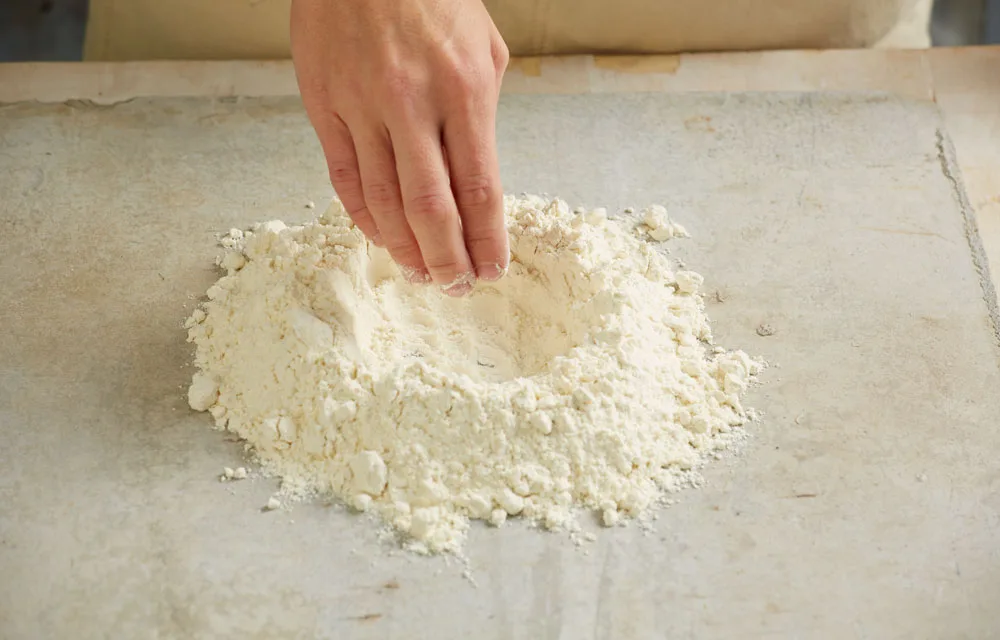
Pour eggs into well.

Carefully beat eggs in well with a fork until smooth.
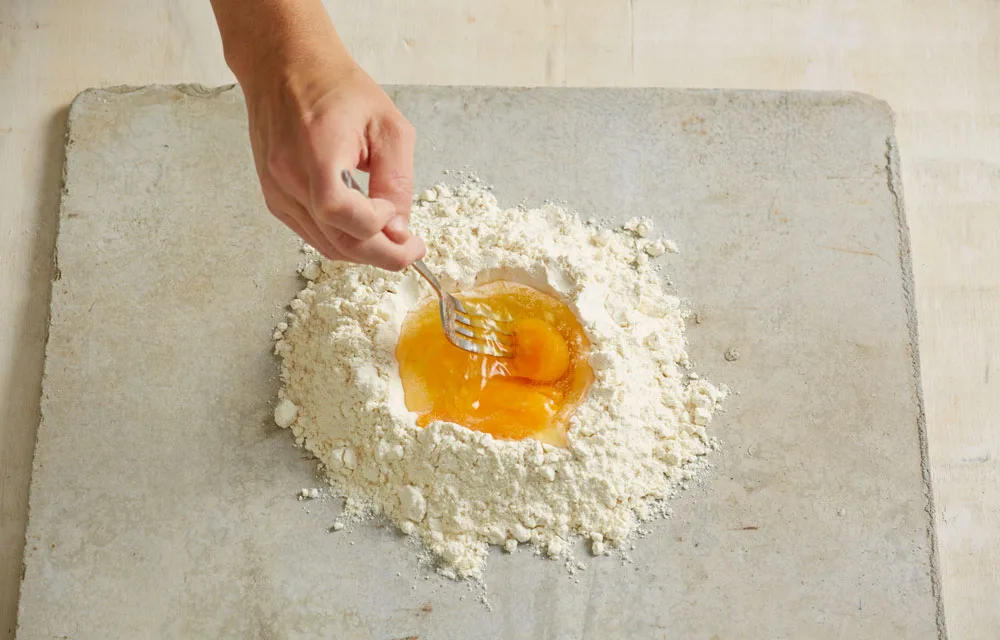
Gradually incorporate flour into beaten eggs, a little at a time, until almost combined.

Using your hands, bring dough together.
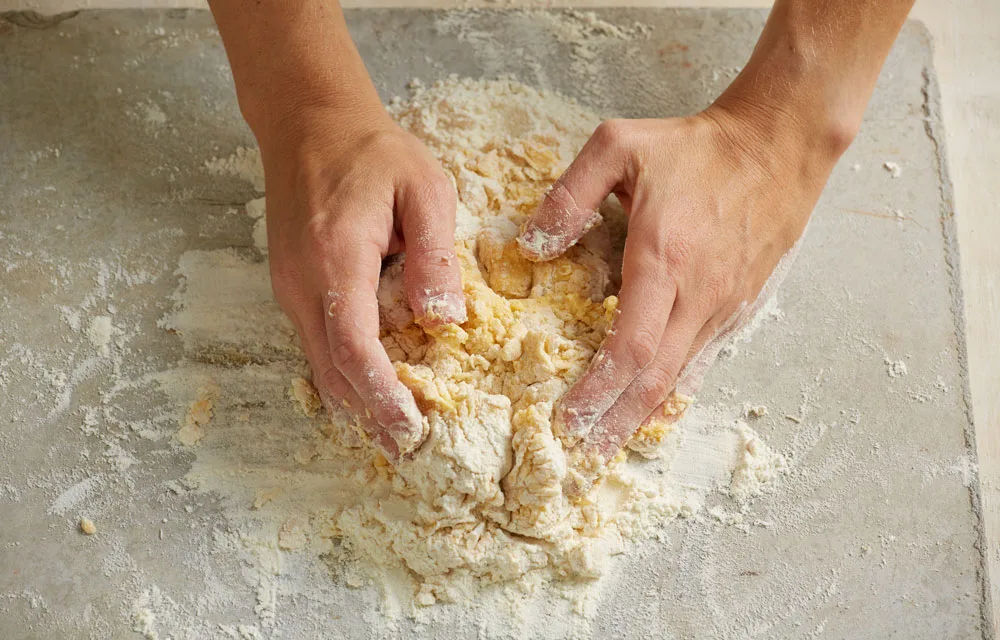
Knead dough using heel of your hand. Push down and forward into dough, occasionally turning 45°.
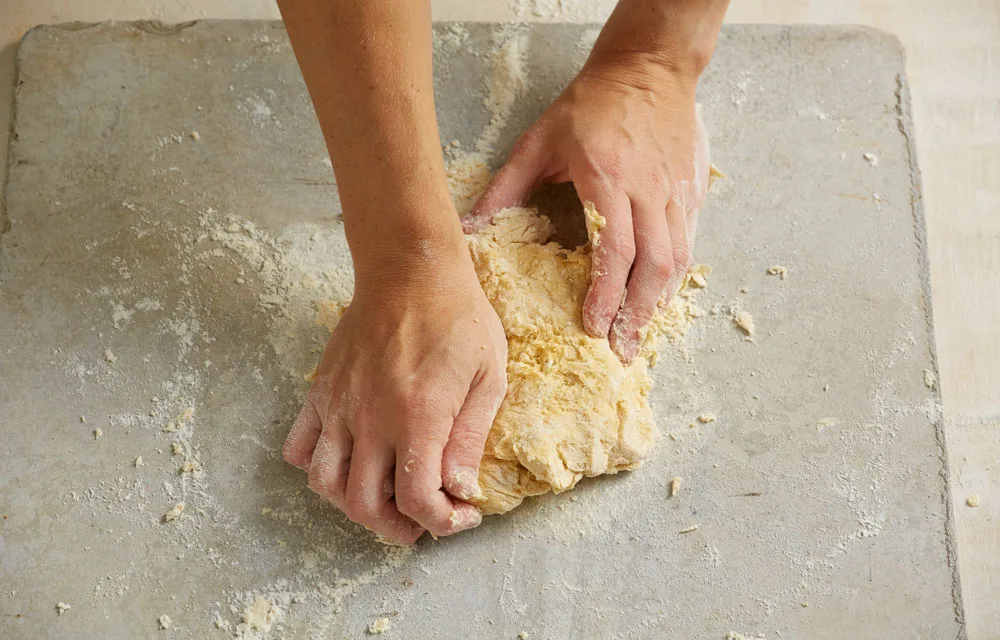
Continue kneading for 5 minutes or until a smooth and silky dough forms. There is no wrong way to knead as long as you’re pushing, pulling, tearing and moving dough.
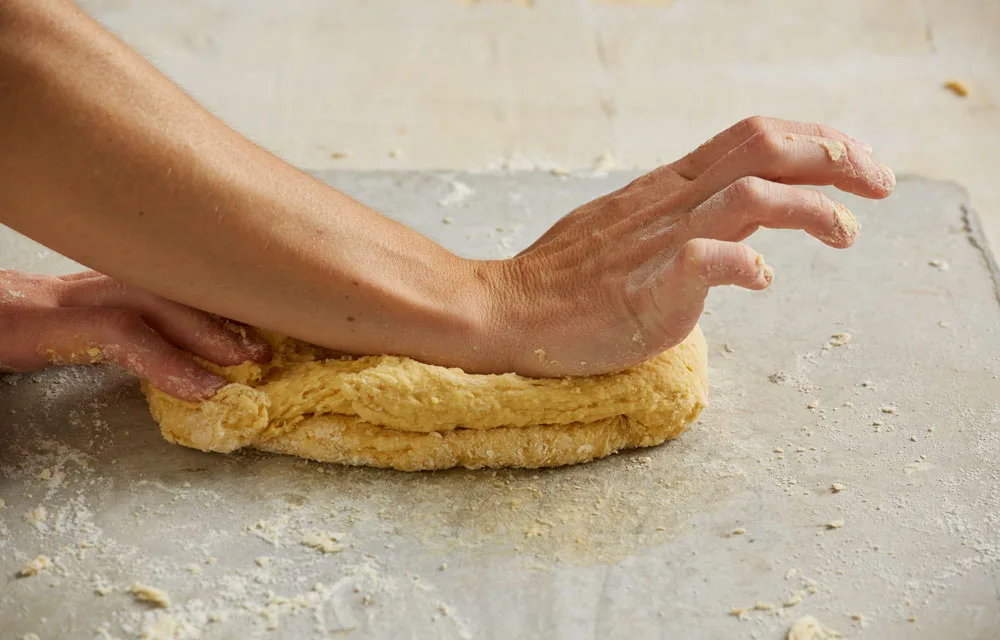
Wrap dough in plastic wrap and set aside for 30 minutes at room temperature to rest. If not using immediately, store in the fridge for up to 24 hours.
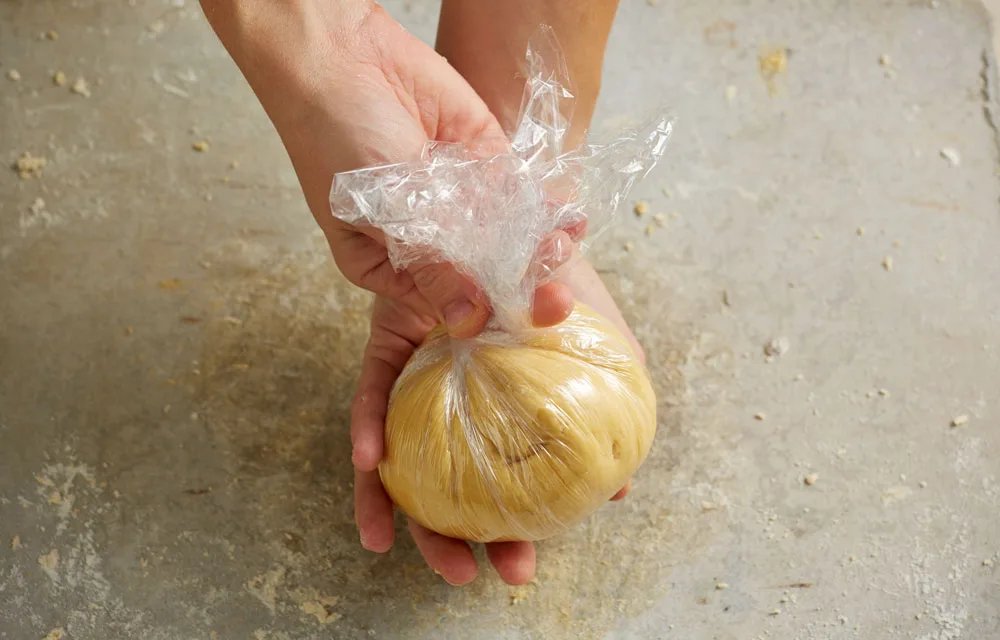
Cut dough into quarters.

Flatten ¼ of the dough with your hands. Wrap remaining dough in plastic wrap and set aside.

Dust a clean dry surface with a little extra flour (if using a pasta machine to roll out, see opposite). Line an oven tray with baking paper and dust lightly with extra flour.
Shape dough into a log and roll out with a rolling pin to create a rough rectangle 2mm thick (about 18cm wide and 45cm long). Put on prepared tray and cover with plastic wrap to stop it drying out.
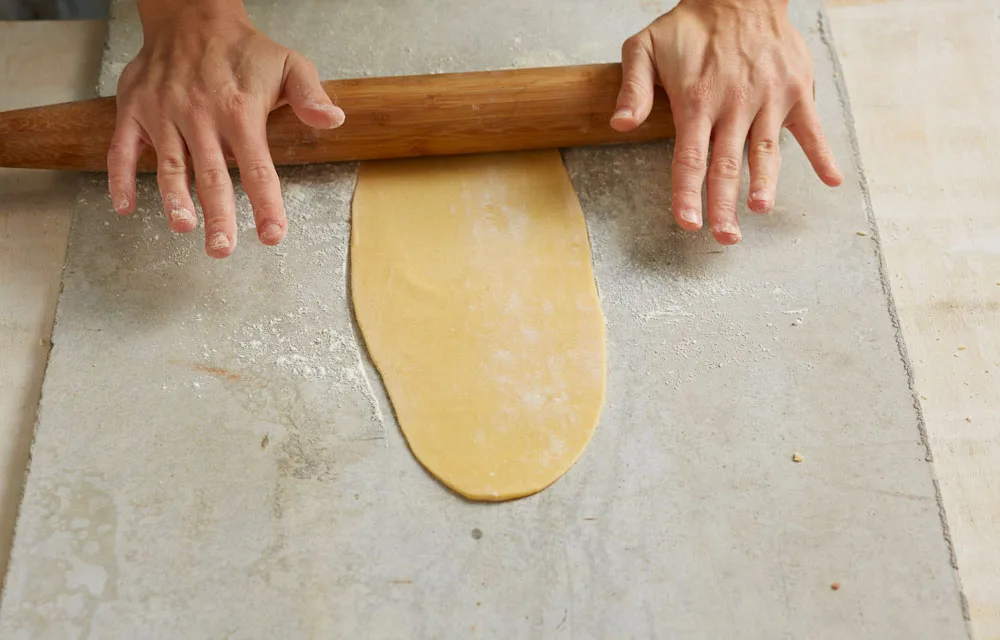
Repeat Steps 10–12 with remaining dough.
Dust 1 pasta sheet with a little extra flour, then gently fold into thirds lengthways.
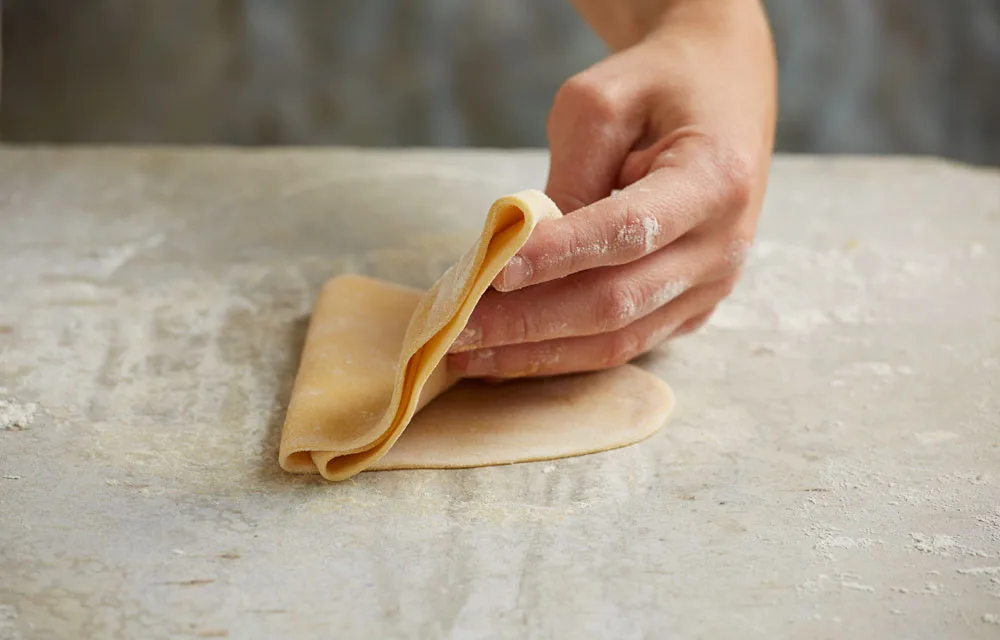
Using a large sharp knife, cut through layers of pasta to preferred width. You can cut to create spaghetti (about 2.5mm wide), tagliatelle (about 6mm), fettuccine (about 8mm), pappardelle (about 13mm) or handkerchief or lasagne sheets. You can also create your very own free-form pasta by cutting to whatever length, width and shape you like!
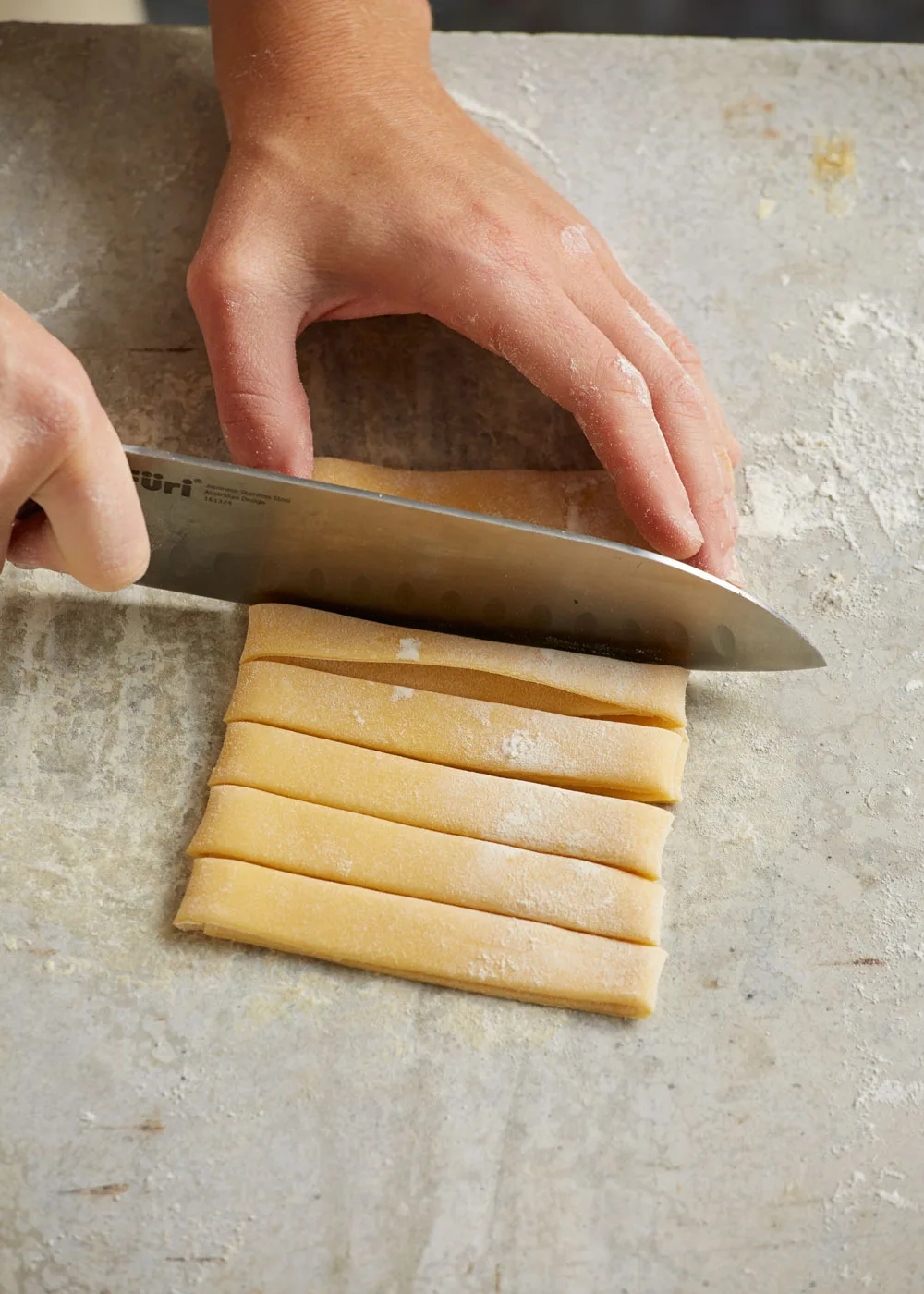
Using your fingertips, carefully unravel pasta. Repeat with remaining pasta sheets.
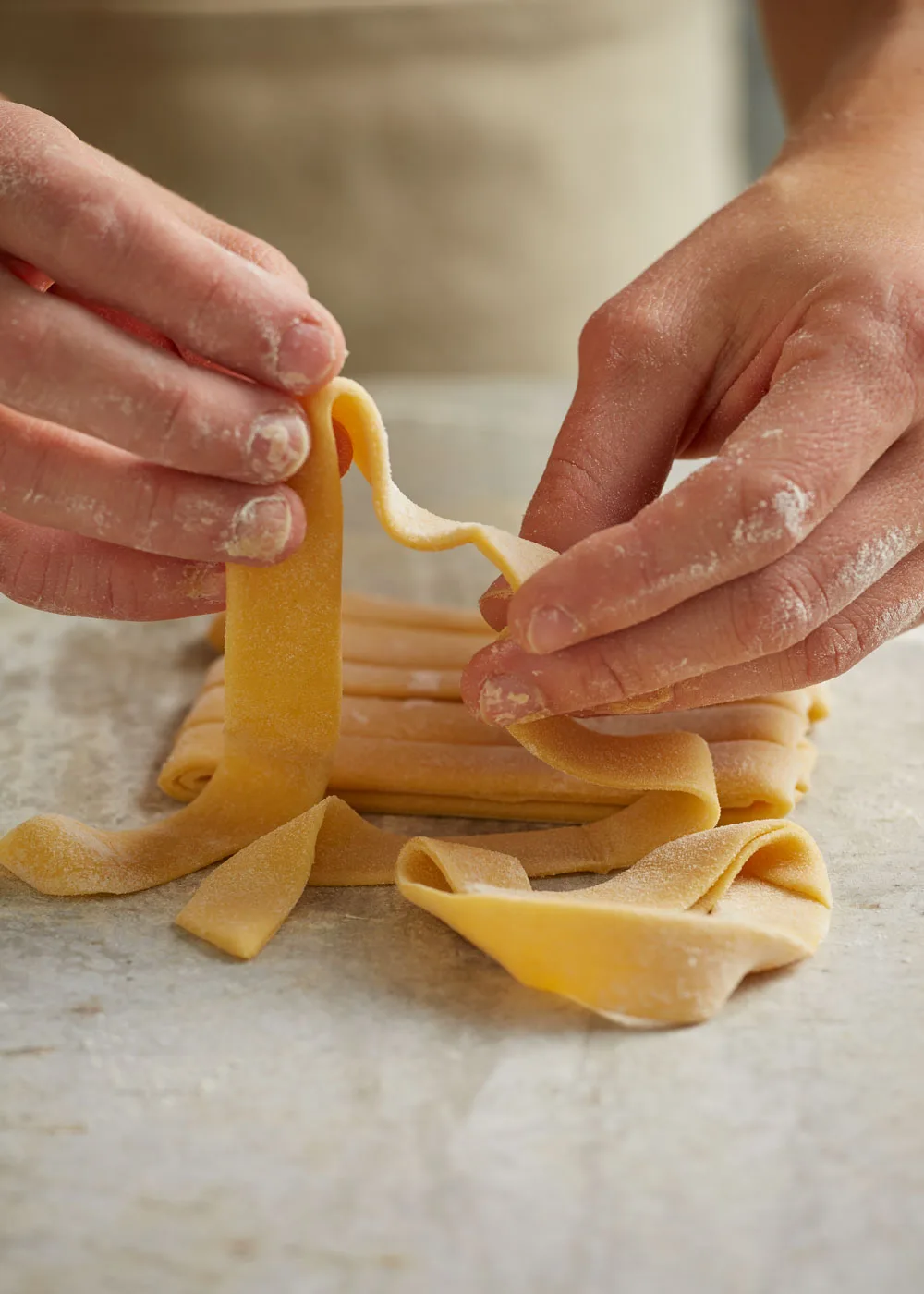
Bring a large pot of salted water to the boil. Cook pasta for 4 minutes or until al dente. Strain and serve with pasta sauce.
You may also like
Bucatini pasta with cheese and pepper
Karen Martini’s spaghetti carbonara
Linguine with creamy mushroom sauce
 Andre Martin
Andre Martin









